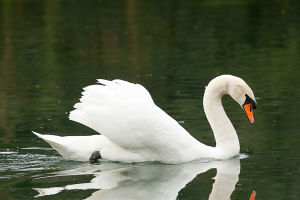Foxes are members of the Canidae family in the Carnivora order. They have flexible ears that can locate sounds with precision and a strong sense of smell. The fox's slim legs allow it to run at a maximum speed of about 50km.
When talking about foxes, people usually think of the words "cunning" and "treacherous". But in fact, the fox is not the case. They are docile, well-behaved, and loyal traits when kept as pets. Today, fox ownership is increasingly popular various breeds are available for enthusiasts to choose from.
1. Red Fox
Red fox, the largest of the genus Vulpes and known for its diverse fur coloration including orange-red, white, gray, and light yellow, mainly inhabits the entire northern hemisphere. They often live in big rock crevices and ravines, sometimes they even live in the same cave group as badgers.
2. Arctic Fox
Arctic foxes are found along the coast of the Arctic Ocean and in the tundra on some islands. The arctic fox has a narrow face, small body, and fluffy tail. In winter, the whole body hair is white, and only the tip of the nose is black; while the summer coat transitions to gray-black with a lighter belly.
3. Snow Fox
The snow fox is an arctic fox belonging to the family Canidae and is listed in the IUCN Red List of Threatened Species. Snow foxes are the most agile animals in the snow. This fox thrives in snowy terrains, adapting with brown or gray fur in summer and transforming to pure white in winter, with fur thickness tripling during colder months.
4. South African Fox
Recognized for its light frame and swift movements, the South African fox features smaller teeth adapted for insect feeding, comprising 80% of its diet with insects like termites and locusts.
5. Blue Fox
The blue fox is an arctic fox of the family Canidae. It is mainly distributed in the countries along the Arctic Ocean and lives in the icy and snowy North Pole. the blue fox sports a blue-gray fur year-round, which is the result of adapting to its living environment.
Because the main activity place of the blue fox is along the coast of the Arctic Ocean. The blue-gray fur corresponds to the blue sea water and acts as a protective color.
6. Silver Fox
Silver fox is also called the silver black fox. This species is native to eastern Siberia in northern North America, originating as a mutant variant of the red fox in wild conditions.
7. Bengal Fox
Endemic to the Indian subcontinent, the Bengal fox is mainly distributed at the foothills of the Himalayas and from Nepal to southern India. They sustain a diet of rodents, lizards, crabs, termites, insects, small birds, and fruits.
Foxes, with their diverse breeds and adaptations to various habitats, symbolize both the resilience and adaptability of wildlife. From the snowy expanses of the Arctic to the vibrant landscapes of South Asia, foxes continue to captivate the imagination of humans and researchers alike. As companions, they offer unique insights into the intricacies of animal behavior and the wonders of the natural world.


